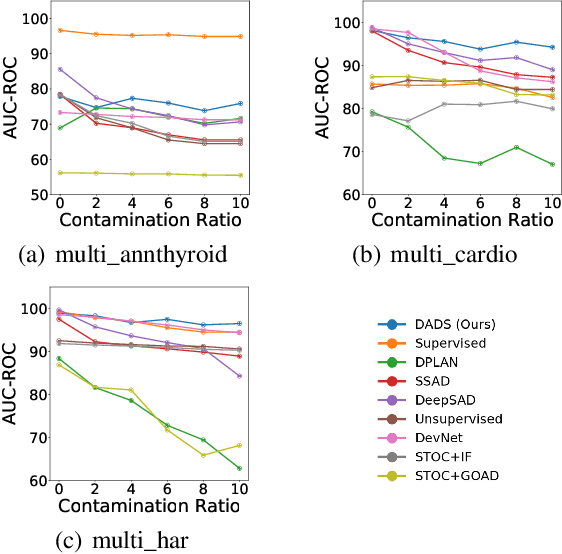Deep Anomaly Detection and Search via Reinforcement Learning
Paper and Code
Aug 31, 2022



Semi-supervised Anomaly Detection (AD) is a kind of data mining task which aims at learning features from partially-labeled datasets to help detect outliers. In this paper, we classify existing semi-supervised AD methods into two categories: unsupervised-based and supervised-based, and point out that most of them suffer from insufficient exploitation of labeled data and under-exploration of unlabeled data. To tackle these problems, we propose Deep Anomaly Detection and Search (DADS), which applies Reinforcement Learning (RL) to balance exploitation and exploration. During the training process, the agent searches for possible anomalies with hierarchically-structured datasets and uses the searched anomalies to enhance performance, which in essence draws lessons from the idea of ensemble learning. Experimentally, we compare DADS with several state-of-the-art methods in the settings of leveraging labeled known anomalies to detect both other known anomalies and unknown anomalies. Results show that DADS can efficiently and precisely search anomalies from unlabeled data and learn from them, thus achieving good performance.
 Add to Chrome
Add to Chrome Add to Firefox
Add to Firefox Add to Edge
Add to Edge